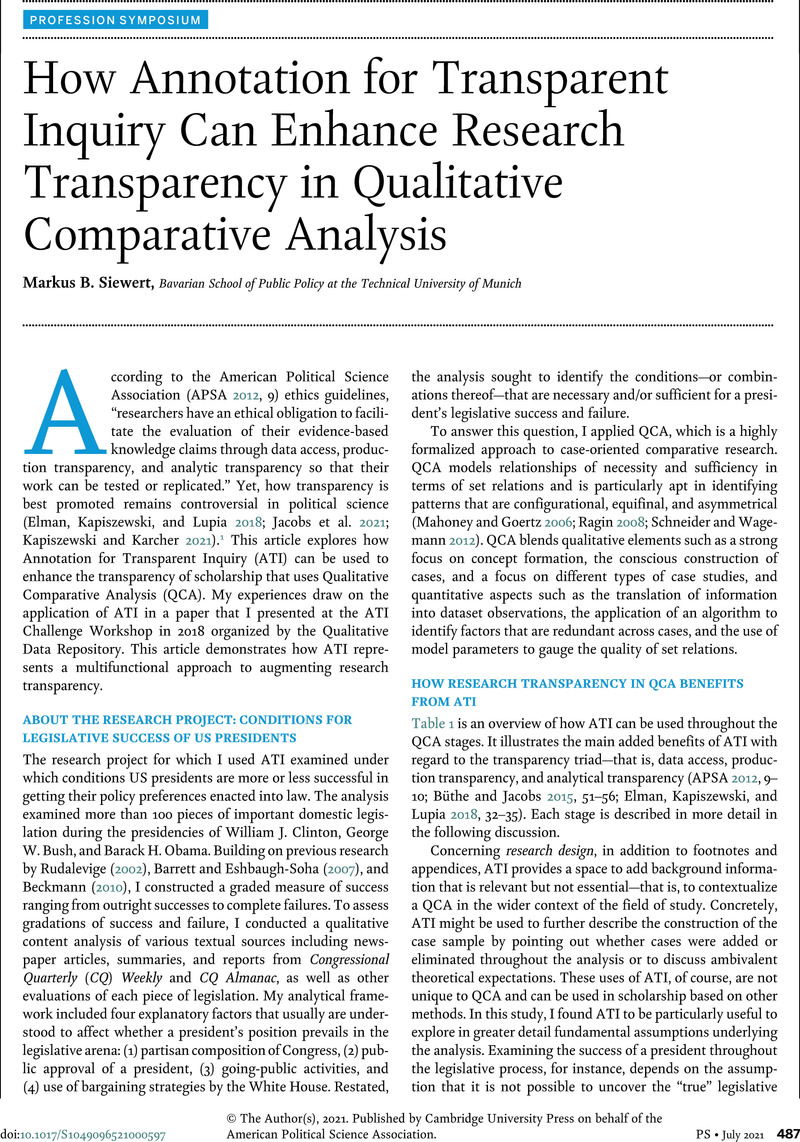Crossref Citations
This article has been cited by the following publications. This list is generated based on data provided by Crossref.
Gerring, John
2021.
Annotations to ATI.
PS: Political Science & Politics,
Vol. 54,
Issue. 3,
p.
496.
Mayka, Lindsay
2021.
Bridging Positivist and Interpretative Approaches through Annotation for Transparent Inquiry.
PS: Political Science & Politics,
Vol. 54,
Issue. 3,
p.
479.
Myrick, Rachel
2021.
Reflections on Using Annotation for Transparent Inquiry in Mixed-Methods Research.
PS: Political Science & Politics,
Vol. 54,
Issue. 3,
p.
492.
Milonopoulos, Theo
2021.
Annotating Without Anxiety: Achieving Adaptability, Accessibility, and Accountability Through ATI.
PS: Political Science & Politics,
Vol. 54,
Issue. 3,
p.
483.



